Assistant Principal / Leader of Pedagogy
Mr Stephen Chapman
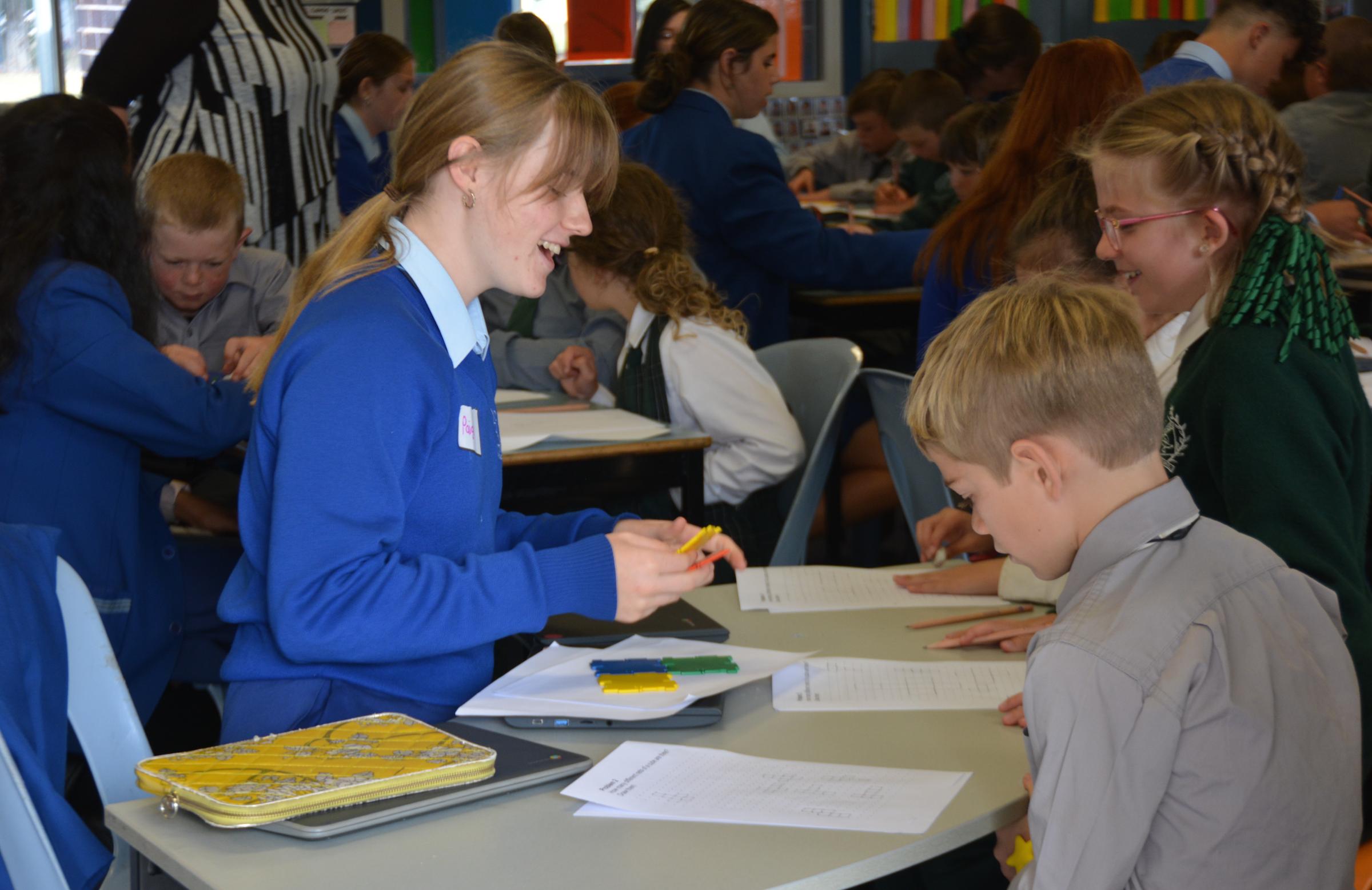
Assistant Principal / Leader of Pedagogy
Mr Stephen Chapman
Blended Learning: Everyone keeps learning!
This issue I’m writing all about what happens when the teacher or students are absent from a class. Guess what? The learning continues! Recently, there have been a number of staff away with classes taken by other teachers. This week especially, there has been an increase in the number of students absent, too. Thankfully, every class has continued to work on their content, skills and tasks. This is thanks, primarily, to what is called Blended Learning. There is one main message I want to give to students, parents and carers. If a student is away, they have a responsibility to keep up with the work in each class. And get it done before they return to class the next day!
“Blended Learning is an education program that integrates a virtual and face-to-face learning environment for students.” (p. 1, National Education Association, 2021). It means that no longer is a physical presence in the classroom the only way to participate in a lesson. Teachers or students might be at home whilst participating via Zoom, connecting them to the rest of the class via a TV screen in the actual classroom. Groups of students can be in different locations while they chat on Discord and complete a group task on a shared Google Doc. The teacher can write feedback that the students see in real-time as comments on the doc.
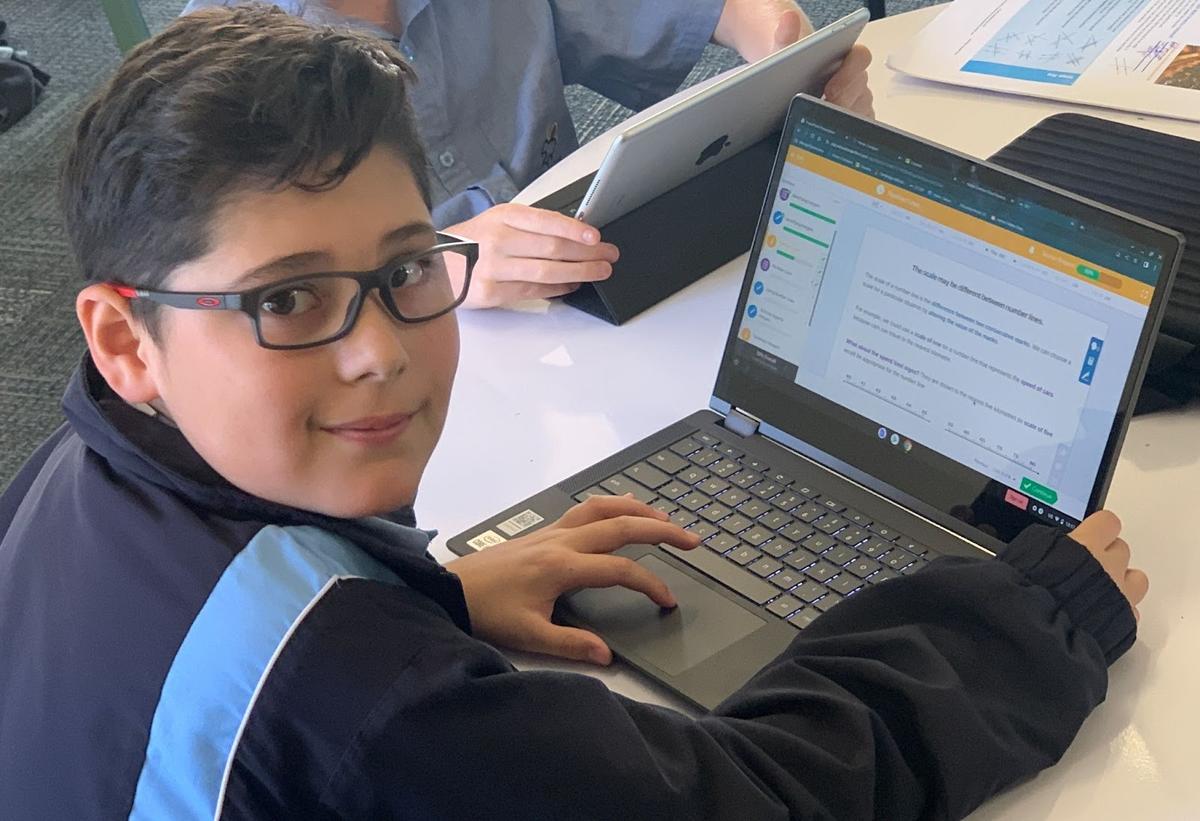

Isaac (Year 7) working on Education Perfect in Maths. This work can be done anywhere with built-in feedback helping independent learners.
The reason that keeping up with the work is so easy at O’Connor is that all students, parents and teachers have access to Compass. This is our School Management System where students can go to see their work for each lesson.


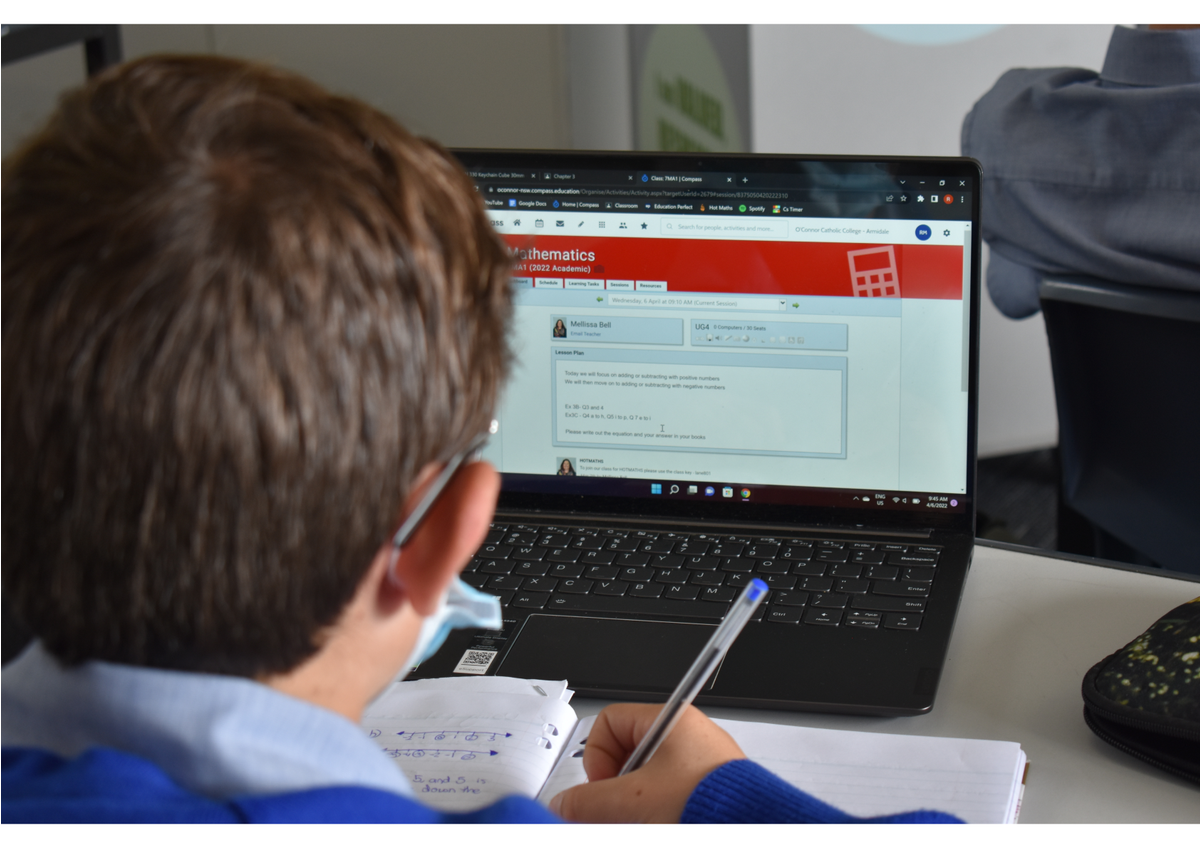

Compass is the one-stop shop for students to see what is planned for each lesson.
Students can read on Compass where they need to go to complete the learning for each lesson. For example, it might say to watch a particular youtube video, then complete the task on Google Classroom. HOTmaths and Education Perfect are other sites that students are often directed to. All of these things can be done regardless of where the students or teachers are located. We have, for a variety of reasons, students located in different areas of the school from the normal classroom. This can be for a variety of reasons. A student might be working in the learning hub as a foot injury prevents them from moving around the school. They might need some time out in the office. These students just go to Compass and get the work done.
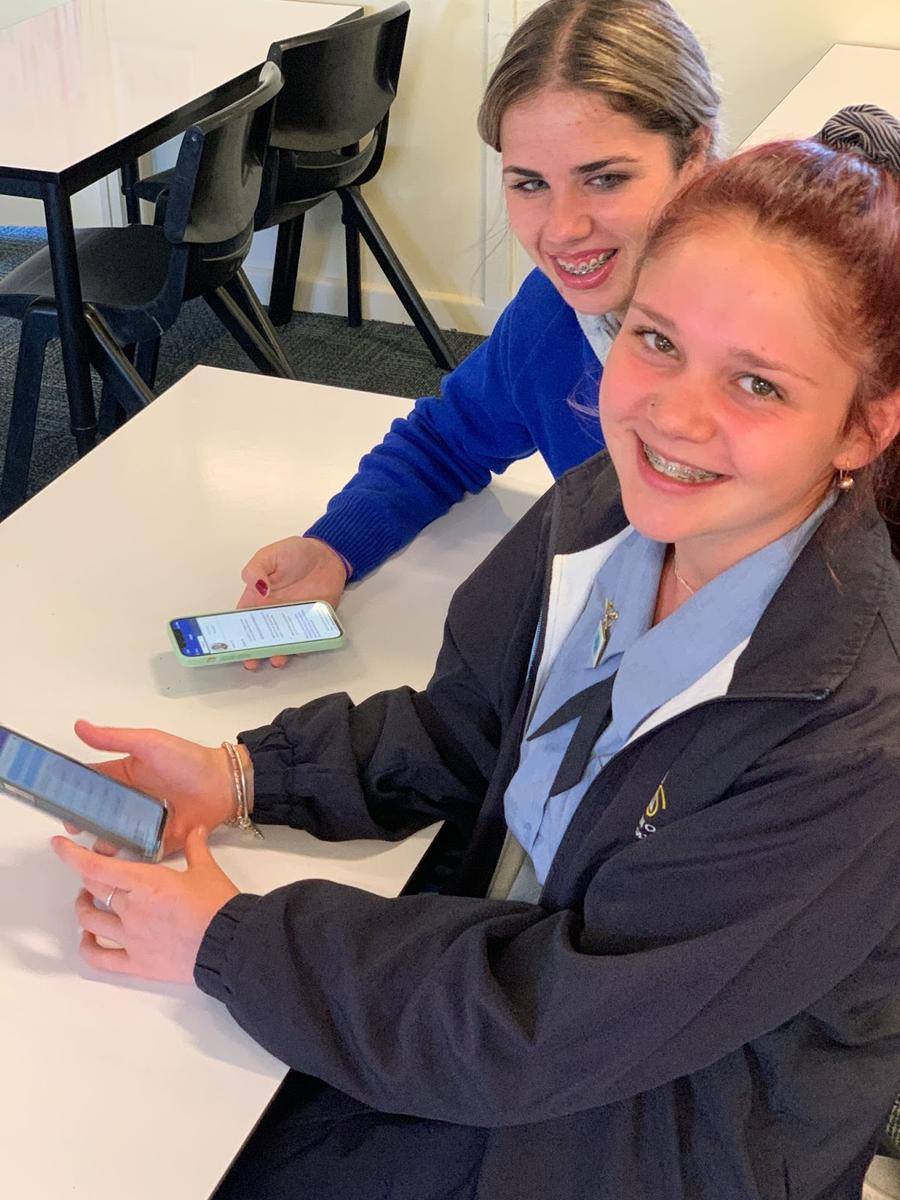

Year 11 Morning PAC: Chelsea and Sarah check on their phones what they have in their lessons for the day on Compass
We all learned so much about this flexibility during the pandemic. Lockdowns meant we all had to learn quickly. “Teachers became much more adept at using technology. Eighty-eight percent of teachers said their ability to use tech improved during the 2020-21 school year” (p. 2, Klein, 2021). This was from a recent survey in the US with similar results certainly applicable here. I can vouch for the fact that many of the teachers at O’Connor learned so much about online learning and making videos during the last two years. Teachers post these videos on Compass or Google Classroom so students can watch them when they need help. I’ve been following 7 Core Class 1 recently and have seen a video like this working well. Mrs Frazier made a video for her Visual Art students showing all the stages of making a clay head and shoulders. Students were, in different parts of the room and at different stages of their project competition, watching the video to help themselves. Mrs Frazier also gave each student a hard copy document with pictures showing them how to make each part. Teachers, too, use these videos for their own learning. Our IT staff, Mr Harris and Mr McFarlane, have shared a variety of videos in the past to help with tasks. An example is how to write reports in the Compass system. Teachers look at these videos when they need it without needing to ask someone for one-on-one help. There are many examples of teachers and students using resources like this at O’Connor.
Blended learning can help differentiate the classroom, too. Teachers can assign different tasks to different students. These students can work on these individual tasks no matter where they are. Videos and learning websites make it easier for students to work in an accelerated pathway, too. They can learn in their own time and seamlessly catch up if these lessons take them away from their normal scheduled classes. The same is the case for those students needing extra help. We have students in Year 11 and Year 12 who are completing online practice to improve their numeracy and literacy skills so they can pass the Minimum Standard tests. There are quite a few students in Year 7 who are improving their reading in their LLI (Levied Literacy Instruction) groups. These students can simply check on Compass to see what they need to catch up on for the lessons they have missed. The same happens in a variety of enrichment opportunities. On Tuesday, I witnessed our Year 7 Debating Team taking on TAS in a live debate. The participants were not even in the same room with Zoom working to keep the debate going well. This is an excellent example of enrichment that wouldn’t be possible without technology.
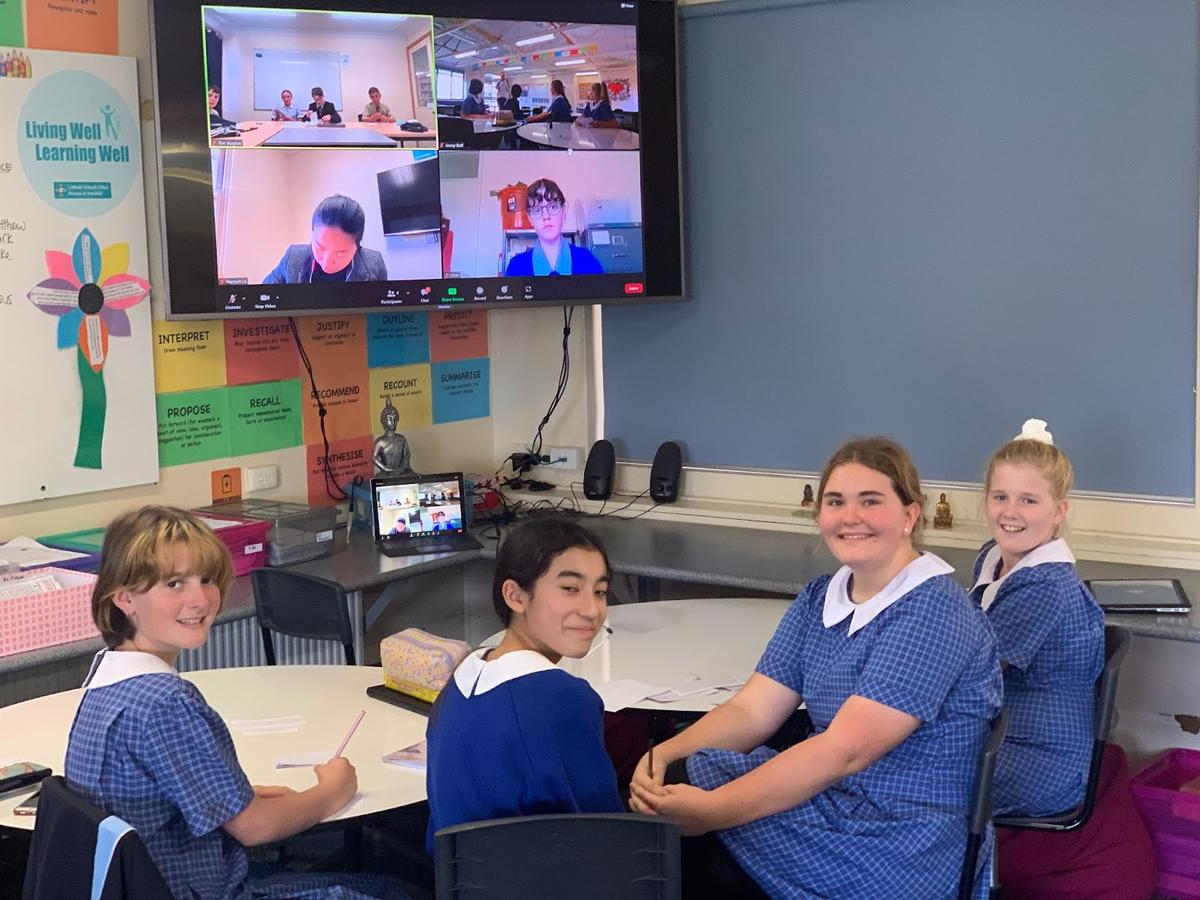

Year 7 debaters competing against TAS using ZOOM. A great enrichment opportunity!
To finish with, I’d like to focus on Flipped Learning. “Teachers are now more likely these days to try out an intensive form of blended learning—the so-called flipped classroom—in which students cover class content online at home and in-person instruction is used for discussions, projects, and practice.” (p. 4, Klein, 2021). An increasing number of teachers around the world are using this approach with amazing success. Students watch a video of the direct instruction at home the day before the lesson. Then, in the classroom, they work on the tasks and applications of the skills. This reduces teacher talk and enables students to get to the questions that require higher-level thinking skills.
So, here's the main message again. Students can keep their learning going no matter where they are. Blended learning means they can learn in a variety of ways, including learning in an online environment. It just takes some organisation and dedication to go to Compass and complete the work. Learning is what it’s all about!
Mr Stephen Chapman
Assistant Principal - Leader of Pedagogy
Never stop learning; for when we stop learning, we stop growing - Jack Lewman
References
The Future of Blended Learning: What Educators Need to Know. Klein, A. September 14, 2021. Education Week. Retrieved from: https://www.edweek.org/technology/the-future-of-blended-learning-what-educators-need-to-know/2021/09
Rethinking the Classroom for Blended Learning. National Education Association. March 25, /2021. Retrieved from: https://www.nea.org/professional-excellence/student-engagement/tools-tips/rethinking-classroom-blended-learning

